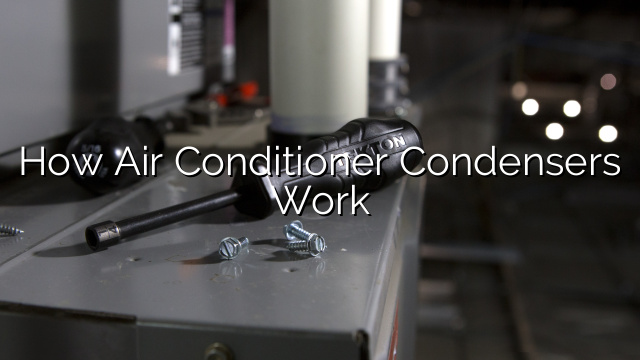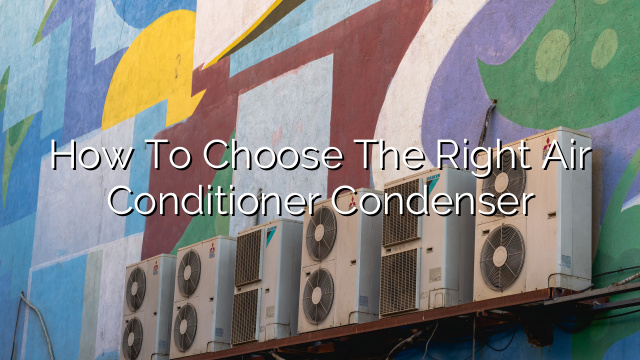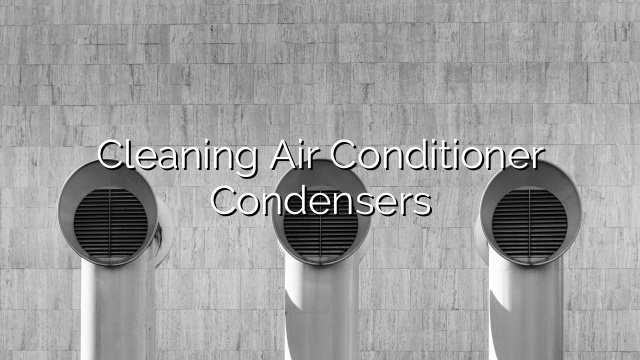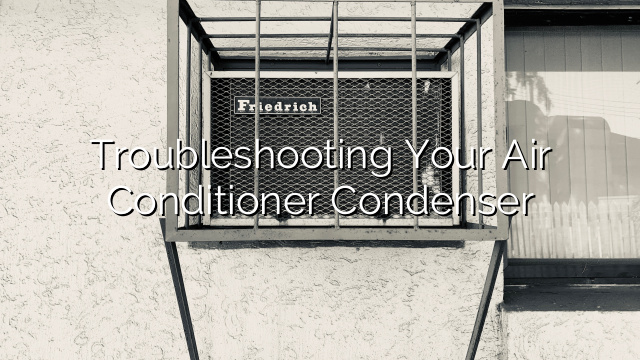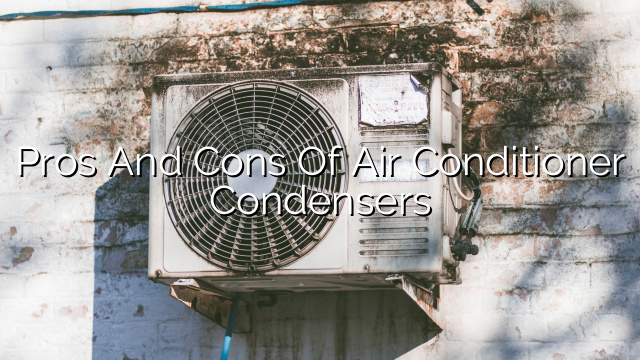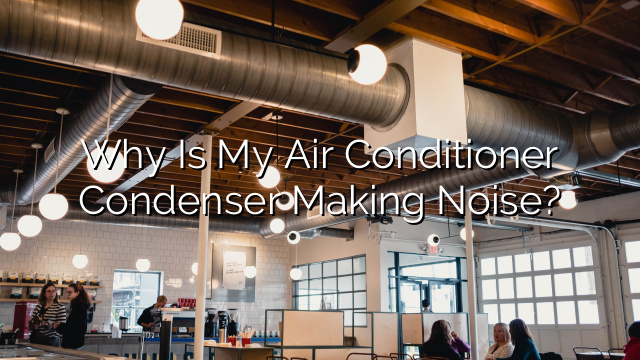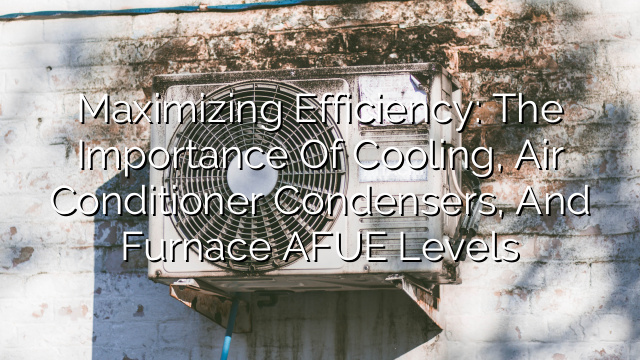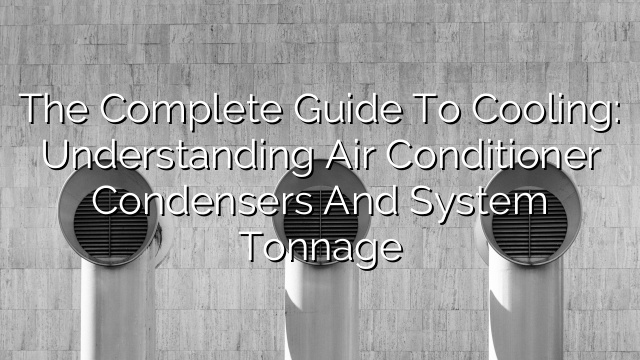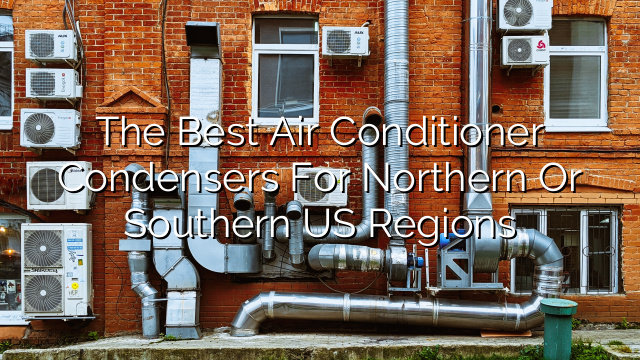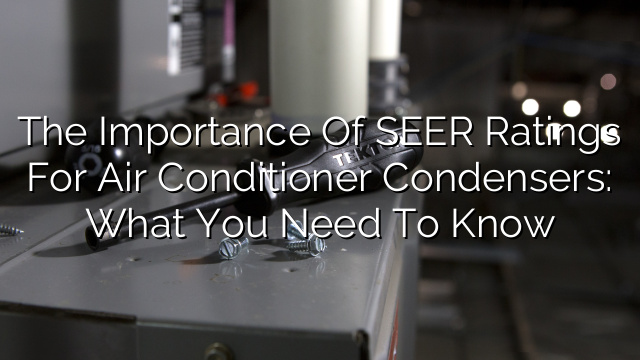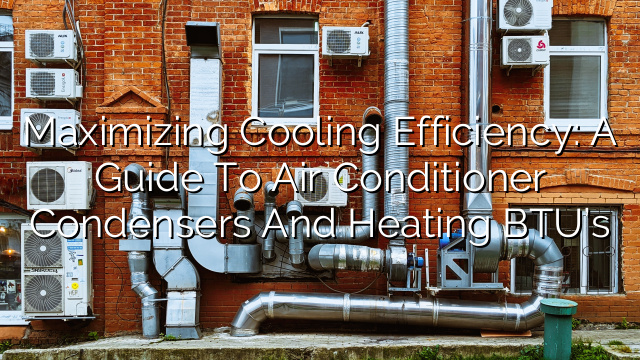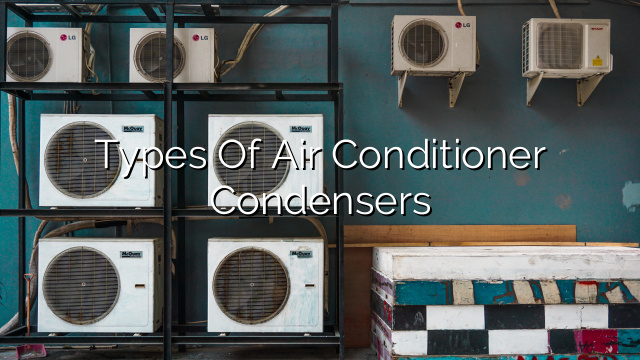How Air Conditioner Condensers Work
Air conditioners are essential for keeping our homes cool and comfortable during the summer months. However, many people may not fully understand how their air conditioner works, particularly the condenser unit. In this blog post, we will explain how air conditioner condensers work, diving into the various components and the overall process. By the end, you will have a better understanding of how your air conditioner keeps your home cool.
What is an Air Conditioner Condenser?
The condenser unit is one of the main components of an air conditioning system. It is typically located outside the home and is responsible for releasing the heat collected from inside the house during the cooling process. The condenser unit is composed of several important parts, each with its own role in the overall functioning of the air conditioner.
Components of an Air Conditioner Condenser:
- Compressor: The compressor is the heart of the condenser unit. Its main function is to circulate refrigerant and increase its temperature by compressing it.
- Condenser Coil: The condenser coil, also known as the outdoor coil, is where the heat from the refrigerant is released to the outdoor air. It is made up of copper or aluminum tubes, which are surrounded by thin aluminum fins to enhance heat transfer.
- Fan: The fan is located at the top of the condenser unit and is responsible for drawing air over the condenser coil, facilitating heat transfer and expelling it to the outdoor air.
- Refrigerant Lines: These are the tubes that connect the indoor and outdoor units. They carry the refrigerant back and forth, allowing it to absorb heat from the indoor air and release it outdoors.
- Expansion Valve: The expansion valve is located between the condenser and the evaporator and is responsible for controlling the flow of refrigerant into the evaporator coil.
The Process of Air Conditioner Condensation:
Now that we have a basic understanding of the components of an air conditioner condenser, let’s dive into the process of air conditioner condensation:
- The process begins with the indoor unit, known as the evaporator, where the refrigerant absorbs the heat from the indoor air. As the warm air passes over the evaporator coil, the refrigerant inside the coil evaporates, turning into a gas.
- The gaseous refrigerant then travels through the refrigerant lines to the outdoor unit, which is the condenser. Here, the compressor plays a crucial role by increasing the pressure and temperature of the refrigerant.
- The hot refrigerant gas enters the condenser coil, where heat is released to the outdoor air through the process of conduction. The fan helps to draw the air over the condenser coil, enhancing the heat transfer process.
- As the refrigerant loses heat, it condenses back into a liquid state. This liquid refrigerant then flows through the expansion valve, where its pressure is reduced, allowing it to cool further.
- The cooled liquid refrigerant then returns to the indoor unit, where it enters the evaporator coil. As warm air from inside the house passes over the coil, the refrigerant evaporates once again, absorbing the heat and starting the cycle all over again.
Maintaining your Air Conditioner Condenser:
Proper maintenance of your air conditioner condenser is essential to ensure its optimum performance and longevity. Here are a few tips:
- Clean the condenser coil: Over time, the condenser coil can accumulate dirt, dust, and debris, hindering heat transfer and reducing efficiency. Regularly clean the coil using a hose, and if necessary, a soft-bristle brush.
- Keep the surrounding area clear: Make sure there is no obstruction around the condenser unit. Trim any nearby plants or bushes, and remove any debris or leaves that can block airflow to the unit.
- Change the air filter: A dirty air filter can restrict airflow, leading to reduced efficiency and increased strain on the system. Check and change your air filter regularly to keep the system running smoothly.
- Schedule regular maintenance: It is advisable to have your air conditioner serviced by a professional technician at least once a year. They will inspect and clean the condenser.
Frequently Asked Questions
How often should I clean the condenser coil?
It is recommended to clean the condenser coil at least once a year. However, if you live in a particularly dusty or polluted area, more frequent cleaning may be necessary.
Can I clean the condenser coil myself?
While it is possible to clean the condenser coil yourself, it is advisable to hire a professional technician for this task. They have the necessary knowledge and equipment to clean the coil effectively and safely.
What happens if the condenser coil is dirty?
If the condenser coil is dirty, it can hinder heat transfer and reduce the efficiency of your air conditioner. This can lead to higher energy consumption and poor cooling performance. Regular cleaning of the condenser coil is essential to maintain optimal performance.
How can I improve the efficiency of my air conditioner condenser?
In addition to regular cleaning and maintenance, you can improve the efficiency of your air conditioner condenser by ensuring proper airflow around the unit, insulating your home, and using a programmable thermostat to regulate temperature settings.
Conclusion
The condenser unit is a vital part of your air conditioning system, playing a crucial role in cooling your home. By understanding how the condenser works and performing regular maintenance, you can ensure that your air conditioner operates efficiently and keeps your home cool and comfortable.

